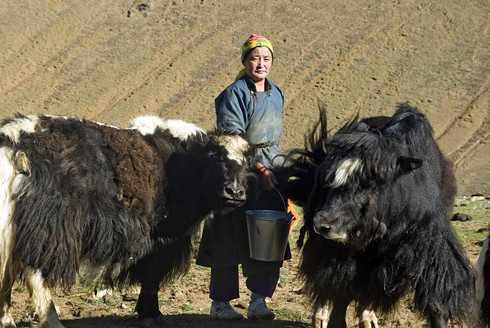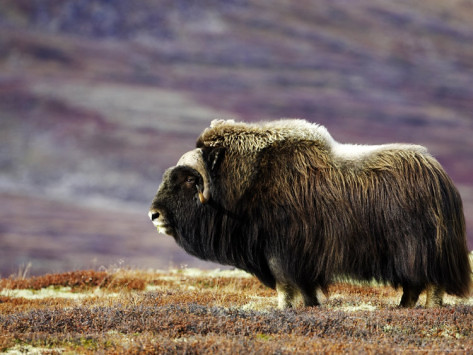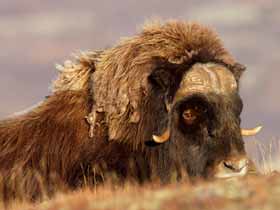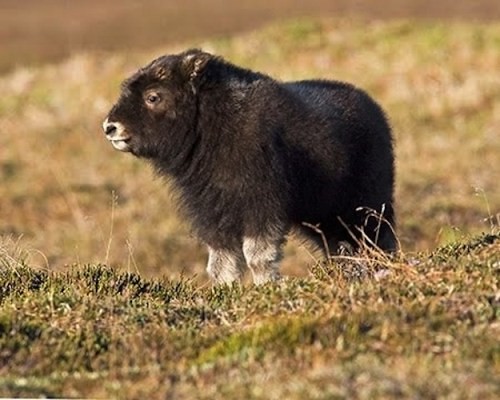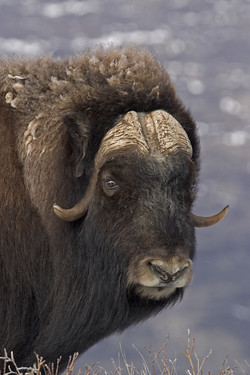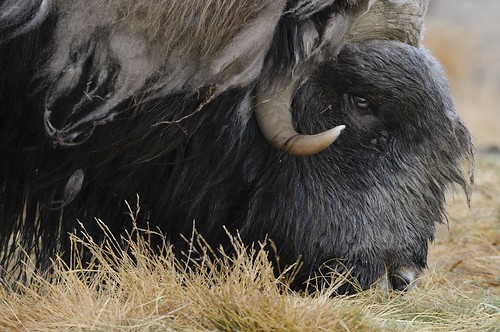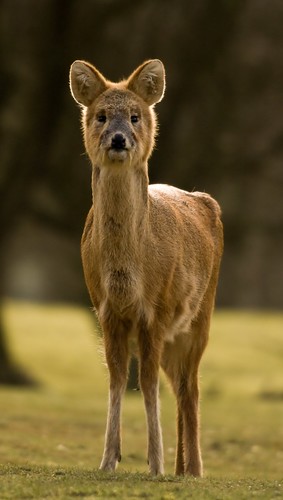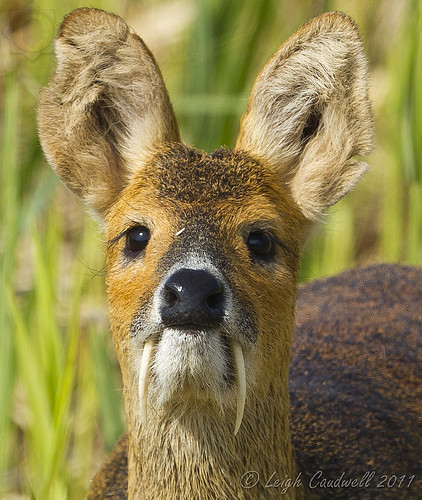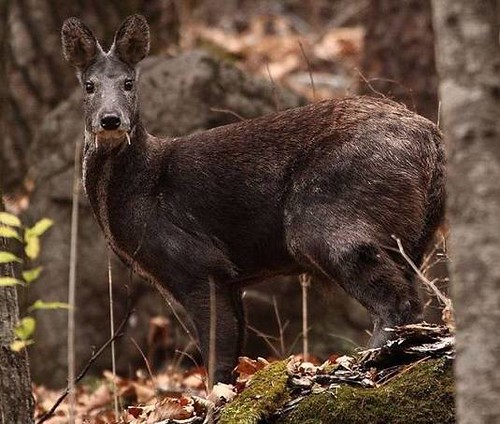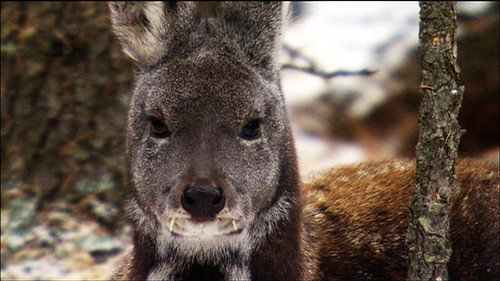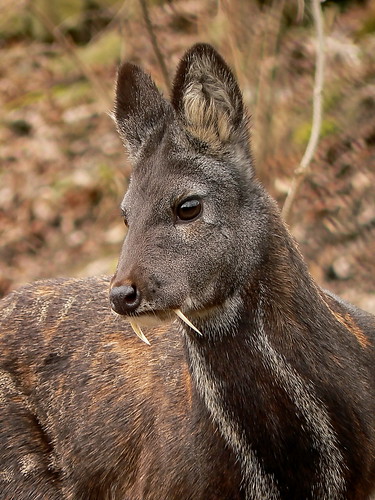October is flying by faster than a witch on a turbo broom.
I have totally failed at inktober, the daily prompt inking and drawing exercise : I only managed to do 4 ! I was hoping to do way more and finish with lots of drawing and a story to go with it. Unfortunately work, dyeing and getting all the clubs prepped to go out kinda messed up my caqlendar. Australia Post announced that the last shipping date for over seas orders so they can receive their parcels before Christmas is last week of November, which meant that I had to prep two clubs at once and I am still busy packing the October Clubs lol So, yeah, it is all happening ..again… busy busy busy . What I would not give to get a gizmo so I would have more time in a day…..
I am very happy to announce that all the October Clubs will be shipped out on Monday morning first thing and they are looking absolutely gorgeous!! If you have seen the preview of the label on my social media you might have seen the colours which are eerily similar to the view I have at the moment of the Lilac tree in bloom ! Absolutely gorgeous and awe inspiring, not to mention the lilac blooms smell divine !!! Makes me want to plant more lilac trees. We tend to plant new trees each year so hey, why not?
I love trees, well, not all trees: although I love the bright happy yellow flowers of the wattle tree they make me sneeze my head off continuously when they are in bloom. Typical for me to move to a country that has the wattle as their national flower to which I am allergic…lol Still not moving anywhere else though : anti histamines are my friend…lol
We had a few very beautiful sunny days: much needed to dry out the soggy soil after all the down pours we have been having. We are very lucky to be high up but there are so many who have been flooded : my heart goes out to all who have been impacted.
Next week the Bearded Dragon is celebrating his birthday, which he wants me to forget: He is allergic to birthdays I guess…lol , but we are planning to have a very relaxing day out in nature ! The day after I have to go back to see the specialist and have my bionic heart “reset” and battery powered up: Oh joy! Let’s hope they can fit me with a turbo booster because at the end the year it’s always good to have an extra power boost ! lol
But, I am skipping to next week already and there is still today’s blog update , which is a very exciting one: A brand new, super special edition of TUNDRA tops with Qiviut !!!! The new batch of Tundra tops will be available on the website at 8pm AEST exactly !
So, what is this "Friluftsliv" ???
I love being surrounded by nature where we live. I am extremely lucky. You may be stressed and busy but as soon as you are in nature it is like a weight is lifted off your shoulders. The Norwegians have an expression for it: Friluftsliv. The expression friluftsliv was invented by the famous Norwegian playwright Henrik Ibsen in the 1850s, who used the term to describe the value of spending time in remote locations for spiritual and physical wellbeing. But the concept of being in nature for purely recreational purposes has been part of Norwegian culture for centuries. “Today, nine out of ten Norwegians state that they are interested in friluftsliv”, says Bente Lier, secretary-general of Norsk Friluftsliv, an umbrella organization for 18 Norwegian outdoor organizations.
“Friluftsliv is not connected to a specific activity. For Norwegians, the word has a deeper meaning, like ‘disconnecting from daily stress’ and being part of the cultural ‘we’, which binds us together as human beings as a part of nature”, Lier tells.
As a philosophy, friluftsliv is basically about a simple life in nature without destroying or disturbing it. The concept is also tightly connected to “kos” (cosiness) – the unique Norwegian word for having a good time. Experts have long known that spending time in nature has a positive effect on both our physical and mental health.
“The physical benefits of friluftsliv are invaluable because it most often includes some form of physical activity. But equally important are the mental benefits”, says Lier.
She refers to a study that shows that being in nature has clear positive benefits both in reducing anxiety and improving cognition. Several Norwegian studies show that one of the main motivations for taking part in friluftsliv is the wish to experience peace and calm.
In a public survey from 2020, nine out of ten Norwegians reported that they felt feel less stressed and in a better mood when they were spending time in nature. “What happens when we pay attention to nature, is that we shift our focus away from ourselves”, says Helga Synnevåg Løvoll.
Synnevåg Løvoll, who is an associate professor in friluftsliv at Volda University College, has done several studies on emotional, spiritual, and aesthetic experiences when practising friluftsliv. . There are five ways to wellbeing that can all be expressed through friluftsliv:
1. connect with nature
2. be active (through walking, hiking, cycling, etc)
3. take notice (by being curious, catching sight of the beautiful)
4. keep learning (get to know a new activity or try a new path: more about that in my blog next Friday !!! ) and,
5. give (by helping others)
Even, If you only have a chance just to sit and knit or spin on your balcony, or outside in your backyard, please do! It will make you feel much better!
Now it is time to give you some more information on this magical ancient animal that is the focus of this blog update !
Qiviut is the name of the wool that comes off of the Musk Ox, a gentle giant of a creature often found in Alaska, but also in Norway, more specifically in the Dovrefjell National park.
Once hunted to the brink of extinction, Musk Ox are now considered to have the most precious, softest fiber in the world. Eight times warmer than wool and finer than cashmere, qiviut is rare and it is one of the most luxurious fibres you can choose for a garment.
The softness of Qiviut is something that must be touched to be believed! Qiviut is not only soft, it is also non-irritating to the skin, and is very durable - garments made from it are worn for years and can be hand washed in mild detergent. It retains warmth even when wet.
The lightweight fibre preserves heat in the winter, while also providing cool, breathable comfort in warmer weather. This fibre has been carefully gathered by hand and no animals were harmed in the gentle shedding of it. This fibre generally sells for anywhere between $70-$100/28grams/oz, and skeins of yarn often sell for a lot more!! Fibre count is 100s+ (12-15 micron)!!!

A musk ox mum and her baby
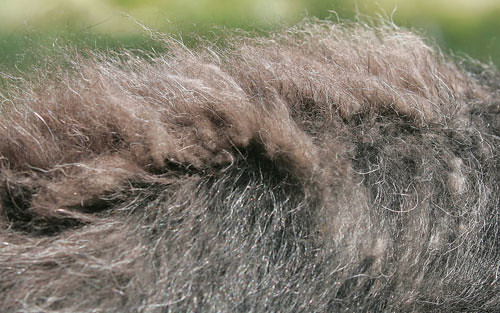
the Qiviut (down of the musk ox) peeking through the guard hairs
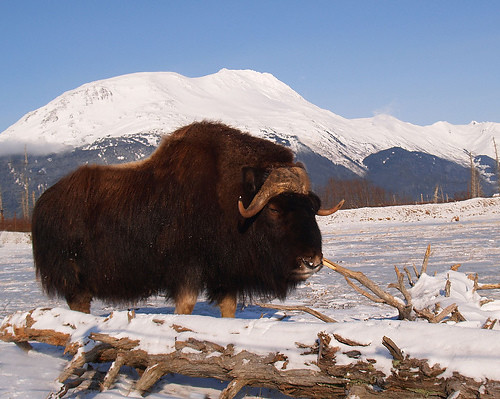
Musk Ox male in Alaska
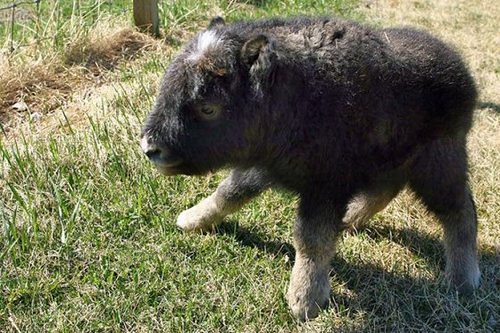
One of the baby musk ox


The mighty muskox (Ovibos moschatu) is a survivor from the ice age. Possessing powerful curved horns, which hang down like side bangs from a helmet-like skullcap, muskoxen are actually more closely related to sheep and goats than to cattle and oxen (although all of the above are members of the Bovidae family).
Adult muskoxen weigh from 180 to 400 kg (400 to 900 pounds) but they look much larger on account of their thick coats and large heads. Once muskoxen proliferated throughout the northern hemisphere alongside woolly mammoths, but hunting and habitat loss caused them to retreat further and further into the remotest parts of the north until the end of the nineteenth century when the animals could only be found in the unpopulated wilderness and empty islands of northern Canada and deep in the arctic vastness of Greenland. In these remote locations tiny herds of one to two dozen muskoxen still subsist on grasses, willows, lichens and moss while contending with terrible arctic predators and fearsome cold.
Fortunately the muskox is provisioned with fearsome horns and doughty neighbours to fend off polar bears and wolves. The herd is capable of assembling in a ring formation with horns outward to stand off wolves and ice bears (although such a strategy works less well against humans with our projectile weapons). To fight the cold, the muskoxen have fat reserves and one of the most remarkable insulating coats in the animal world.
A muskox’s coat is divided into two layers: a long stringy layer of coarse outer wool and an inner layer of soft warm undercoat called qiviut (this Inuit word now primarily denotes muskox wool but it was once also used to refer to similarly soft warm inner down of arctic birds). Qiviut is one of the world’s premier luxury fibres: it is allegedly 8 times more effective at insulation than sheep’s wool and yet is softer than cashmere.
The Musk Ox survived when the other greats of the Pleistocene – woolly mammoth, mastodon, sabertoothed cats, giant sloth – all went away. And it returned to Alaska by way of New York Harbour. Now, it turns out, the musk ox could again be the great survivor in our new Arctic age of extinction. Ross MacPhee, a curator in the department of mammalogy at the American Museum of Natural History in New York City, says the musk ox’s homogenous genetic makeup suggests it has been through population stress before and can survive boom-and-bust cycles.
“What we find with living musk oxen is they’re not exactly clones, but they’re so amazingly similar that there’s only one explanation,” MacPhee says. “And that explanation is that they had to have had a very severe pinch on their populations. We estimate that that happened about ten thousand years ago.” But that doesn’t mean it’s all good news for the cold-weather beast, which is most closely related to goats and sheep and can weigh up to 800 pounds. The pace of these changes could challenge even an animal as resilient as the musk ox, scientists say.
Brendan Kelly, an Arctic ecologist and research scientist for the National Oceanic and Atmospheric Administration, says all Arctic species are currently endangered by the rapid speed of climate change. “For organisms to adapt – whether it’s changing body size, or changing the timing that they have their calves, and hence can match when the plants are most nutritious – it really depends on the rate of the environmental change relative to the generation time of the organism,” Kelly says. “So if there’s a really, really rapid environmental change, it’s very hard for there to be an adaptive response.”
As I was reading about Musk Ox I found out that all of the muskox at the Myskoxcentrum in Härjedalen, Sweden, came from Ryøya, near Tromsø, Norway. What?!? Muskox on Ryøya? I knew about the Dovrefjell group and an attempt to introduce muskox on Svalbard, but I had never heard of a group in northern Norway. The search was on.
It turns out that there is a flock of more 40+ animals now running around free on a small island named Ryøya off the coast of Tromsø. NRK’s Ut i naturen television program made a 24-minute show about “Moskusøya” (“Muskox Island”) in 2006. Unfortunately the show is in Norwegian, but even if you don’t speak Norwegian, it’s still worth watching for a while if you want to see muskox running around and scientists trying to catch them. In the Ut i naturen program, we also get to see some historic television clips from the 1960s when the muskox first came to Troms.
In 1969, 25 muskox calves arrived in northern Norway via boat from Greenland. The idea was to raise muskox for their wool as domesticated livestock. The University of Fairbanks in Alaska had some kind of research project related to muskox husbandry (I haven’t looked into that yet) and the idea was transferred to Norway.
The undercoat wool of muskox, known as qiviut, is a highly valuable wool: it is warmer than wool, finer than cashmere and hypoallergenic. Sounds like the perfect winter clothing material, except that muskox are pretty rare and not widely domesticated – which makes it a very, very expensive material
In 1969, the herd was established at a farm in Bardu with the hope that eventually every farm in the area could have 2-3 muskox for a meaningful supplementary income. But by 1975, calls for the end of muskox experiment were being made. According to media reports, a hunter was killed by a muskox and the muskox population was being devastated by a virus (hmmm, sounds familiar, right?). So in 1976, the herd was moved to northern Troms, and five years later, the Tromsø University is taking care of them to preserve the species.
The Department of Arctic and Marine Biology took over the herd and moved them to Ryøya to study their behaviour and adaptation as arctic animals. Muskox as livestock in Norway didn’t work out, but who knows what the future holds. The Qiviut are still here.
While the scientists herd the muskox to collect measurements and/or for transportation to the overwintering station on the mainland, they quickly pull out the qiviut, which they sell to support their research. Qiviut is a bonus of having muskox in Norway — if you can catch them.
Well , don’t you worry I caught some of it for you to support the musk ox population growing not only on the American continent but also in other habitats that are good for them. This will enable the species to grow, get stronger, adapt and hey, probably outlive us all, since they already did that to the woolly mammoth.
Don’t worry, if I EVER find a woolly mammoth, I will share its’ wool with all of you …
As far as rare breeds are concerned and especially with the musk ox, they are being monitored by scientists to see what is happening with the herds and what their health is. A musk ox can be up to two metres long. The animal is characterised by a long and dense coat and wide hooves and drooping horns. Like domestic cows, musk oxen are ruminants, and allow their food to ferment in a separate stomach prior to digesting it. Musk ox are well protected against the cold Arctic winter. They have two layers of hair--a thick undercoat and heavy outer coat of long, dark hair. Musk ox are a key species in the Arctic, but populations are in decline. A new method is helping scientists to monitor these animals in often difficult to reach, remote locations.
A new method of hair analysis reveals what musk ox in the Arctic have been eating in recent years. The hair is sampled from the animals’ buttocks where it is longest and preserves a longer time series of the animals eating habits. Buttock hair also grows continuously throughout the year and so it gives the most representative picture of the animals’ yearly food intake. “Musk ox [are] a key species in the Arctic that we know surprisingly little about,” says lead author Jesper Bruun Mosbacher, a PhD student at the Arctic Research Centre, Aarhus University, Denmark. “We use a new method that has never been applied in this way before. And we can use it to monitor [musk ox] populations in locations where we otherwise wouldn’t visit very often,” says Mosbacher.
Musk ox are found throughout the Arctic, in Greenland, Canada, Alaska, Norway, and Russia. And some local populations are thriving.
In west Greenland, populations have soared from just 27 in the early 1960s to around 25,000 estimated individuals today, says Mosbacher. But scientists still do not know where most musk ox are or how they are faring. "No one knows how many there are among the [unmanaged] population on the east coast [of Greenland]. The most recent estimate in 1990 was between 2,900 and 4,600 musk ox within the area of the Zackenberg research station," says Mosbacher.
"We know locally from Zackenberg, that the stock there increased throughout the 1990s, until 2007, after which it began to decline drastically. But we only have an overview in localised areas. For the vast majority we have no idea where large populations are, or how they are doing," he says. Mosbacher and his colleagues set out to learn more about these animals behaviour throughout the year, and this meant finding out what they had eaten.
Mosbacher and his colleagues analysed hair from ten Greenlandic musk ox and discovered that the animals’ diet is directly linked with their environmental surroundings and the number of calves born. Fewer calves were born during and after particularly snowy winters.
"In winters with lots of snow, the animals starved and burned their layer of body fat. Musk ox live in such extreme areas and they are very dependent on sufficient body resources both to survive and to be able to produce calves," says Mosbacher.
The scientists analysed the stable isotope composition of the hair, which indicates the type of food that the animals ate in recent years. An isotope is a specific version of an element and every element has several different isotopes. A stable isotope means that it is not radioactive and does not change into another isotope by radioactive decay.
The analytical tool is useful when predicting future population trends in the face of climate change, says Mosbacher. “Our study tries to understand how climate influences the musk ox’s diet, in a region where [climate] is changing twice as fast as in other ecosystems and where populations [of musk ox] are declining,” he says.
“Understanding the connection between the environment and food is important, because then we can begin to understand what will happen as the climate changes." The muskox project is a collaboration between Arctic Research Centre in the Department of Bioscience, Aarhus University, the Copenhagen Zoo, the Department of Biology and Centre for Permafrost at the University of Copenhagen, and the Norwegian Institute for Nature Research.
Musk ox fibres or Qiviut fibres are a down fibre which means it is the undercoat : no buttocks hair for you all !! LOL
The great thing about working with these fibres is that they spin like magic and they are amazingly warm as well. You only need 10% to make a difference in a blend.
In the past I have blended qiviut before and called it Tundra. I did not want to over blend it , afraid to loose the characteristics of the fluffy fibre or to get nasty nepps. So I only blended it three times. This time however I thought why not, so I added more qiviut, more cashmere and changed the overall ratios of blending up a bit. I was totally in love with how my experiment looked and felt to the touch, so, I did more and called it "Tundra 2.0"..as you do ....lol
I have added 30% of the Qiviut fibres in the TUNDRA 2 blend and it is AWESOME!! The thoroughly blended fibres will make fine spinning very easy and more homogenous. It is not only easier to spin but also a very nice overall halo once spun into yarn. I love this blend and I hope you do too !
So, this week's update is the NEW TUNDRA 2.0 Qiviut blend top !!!!
Only a small amount available so please don’t wait too long for this amazing NEW blend that spins like a dream !
Have a fun weekend with lots of fibre play and love!!
You can find all the Tundra Tops in the what’s new section on my website here, together with NEW fabulous looking Tibetan Support Spindles from Lair of the Bearded Dragon and spindle cups ! : https://ixchel.com.au/collections/whats-new
 |
|
It’s the Spooky Season!
Time to spin a vampire!
|
It has been bucketing down with rain so much lately that large parts of Victoria are totally inundated: it is dark, rainy and for some whose properties are under threat or under water, totally horrific. My heart goes out to all ! Please stay safe !
We are doing fine here in the Yarra Valley. Although the name tells you we are in a valley, we are quite high up, so we are safe. The Little Yarra River has reached a high level again, just like not too long ago when another “once in a 100 year flood” was announced by the politicians. It is soggy and I am tempted to rename our place “the soggy bottom farm”…( we are on quite a steep and muddy hill so slipping is a matter of fact and happens more often than not…lol…hence the soggy bottom…rofl), but apart from that we are luck. It is just a bit hard to get all the fibres and yarns (and us) dry now, but the wood fire is still raging, so once inside, it is the best yarn spinning, knitting and crafting weather ever.
To everybody who is a member of the IxCHeL Art Journey clubs: All the fibres and yarns are getting their “paint job” and the drying will start over the weekend…fingers crossed for some sunny drying weather!! I hope that all the October clubs will be ready to ship end of next week. Here is a preview at the art work that inspired this months’ colour way: A pre Raphaelite painting by Arthur Hughes called “April Love”. I always thought this painting was gorgeous but a at the same time a bit spooky…have a look close up and you can see a shadowy figure behind the gorgeous woman! Btw: the model for the painting was Hughes’ wife whose name is totally amazing: Tryphena Foord !
I mean, brilliant right?!
Tonight is all about a super rare breed. Here we go ! It's not a sheep..but it is an amazing animal which has been named anything from a vampire deer to a musk deer to a water deer.
It has been almost hunted to extinction by the perfume industry and now it is the time for us to make sure that this animal doesn't go extinct!!
 |
Vampire Deer
|
The water deer also known as vampire deer (Hydropotes inermis) is a small deer superficially more like a musk deer than a true deer. Native to China and Korea, there are two subspecies: the Chinese water deer (Hydropotes inermis inermis) and the Korean water deer (Hydropotes inermis argyropus) and there is the Himalayan and Siberian deer also known as the musk deer. Water deer are relatively small in size, ranging in length from 775-1,000 mm. They have a short tail, 60-75 mm length. The guard hair is generally thick and harsh. It is longest on the flanks and rump, with a maximum length of 40 mm is the winter under coat, which can be spun into the super soft yarn.
Both sexes lack antlers, but the upper canine teeth, especially in the males, are enlarged, forming fairly long, slightly curved tusks. These saber-like upper canines are the most conspicuous feature of the bucks. They protrude up to about 52 mm from the upper jaw and constitute sharp, dangerous weapons. The canines of the female are much smaller, scarcely 5 mm on the inner side. A dark spot on the sides of the lower lip behind the upper canines makes the canines more conspicuous. A small scent gland is present on the face in front of the eyes on both sexes; this is the only known case of such glands in the Cervidae.
Despite its lack of antlers and certain other anatomical anomalies—including a pair of prominent tusks (downward-pointing canine teeth), it is classified as a cervid. Its unique anatomical characteristics have caused it to be classified in its own genus (Hydropotes) as well as its own subfamily (Hydropotinae). However, a study of mitochondrial cytochrome b sequences placed it near Capreolus within an Old World section of the subfamily Capreolinae. Its prominent tusks (elongated canines), similar to those of musk deer, have led to both being colloquially named vampire deer in English-speaking areas to which they have been imported.
There are Water deer or Vampire deer currently farmed (read protected) and in zoos. In Afghanistan a few have been spotted in 2014 for the first time after 60 years ! The hidropotes or Water Deer I offer you on tonight’s blog has been harvested just like the bison and qiviut and mink, through hand combing or collecting. No animal was killed or harmed in any way.
Water deer are indigenous to the lower reaches of the Yangtze River, coastal Jiangsu province (Yangcheng Coastal Wetlands), and islands of Zhejiang of east-central China, and in Korea, where the demilitarized zone has provided a protected habitat for a large number…..go figure !!! the Demilitarized zone !! but, They can also be found in Siberia and the Himalayas. They inhabit the land alongside rivers, where they are protected from sight by the tall reeds and rushes. They are also seen on mountains, swamps, grasslands, and even open cultivated fields. Water deer are proficient swimmers, and can swim several miles to reach remote river islands.
Water Deer are now located in France, United Kingdom, Belgium, Netherlands, Argentina, and even some in the United States. Chinese water deer were first introduced into Great Britain in the 1870s. The animals were kept in the London Zoo until 1896, when Herbrand Russell oversaw their transferral to Woburn Abbey, Bedfordshire.
More of the animals were imported and added to the herd over the next three decades. In 1929 and 1930, 32 deer were transferred from Woburn to Whipsnade, also in Bedfordshire, and released into the park very happily bouncing along !
The majority of the current population of Chinese water deer in Britain derives from escapees, with the remainder being descended from a number of deliberate releases. Most of these animals still reside close to Woburn Abbey.
It appears that the deer’s strong preference for a particular habitat – tall reed and grass areas in rich alluvial deltas - has restricted its potential to colonize further afield. The main area of distribution is from Woburn, east into Cambridgeshire, Norfolk, Suffolk and North Essex, and south towards Whipsnade. There have been small colonies reported in other areas. As a conservation issue, the UK population of Chinese Water Deer is considered to be of exceptionally high value to the survival of a healthy global population. There is no doubt that the protection of Water Deer will involve not just the population of deer in their native environment, but also the UK population, which probably now exceeds the population in China, Korea and the Himalayas.
The research that is carried out in the UK by the Water Deer Foundation and others will contribute to the protection of the species as a whole. It may seem that all this breed had going for it to be "valued" was the male musk gland, which is worth more than gold...and no,there is not. there is a sustainable way of keeping this bred alive: fibre. It may not be much you can harvest off one deer (only about 450grams per year) and that the hair/down is short..it is extremely soft and nice. I am able to offer you only a very very small amount of hand blended Vampire Deer top.
It is an endangered species and only a very small amount of fibre is harvested without harming the animal per year. In softness it rivals the amazingly expensive and rare Guanaco and Vicuna !
 |
Treat yourself to something special this weekend :
the super soft dreamy IxCHeL Vampire Deer
blend.
Don’t worry ! They don’t bite !
To see everything what is new, Please go to :
Also: when you have a vampire you may need a friendly Fang, I mean , Phang spindle The Lair of the
Bearded Dragon has made some beautiful new ones and I could not help but add
something spooky to two of them: One Ghostbuster themed and the other inspired
by Emily from Tim Burton's "Corpse Bride" .
Here's a look:
Thank you all so much joining me on all these fibre and
spinning journeys!
Have a spooktacularly fun Weekend !
Big hugs,
Charly
|

Welcome to October: The spooky Season !!! and my favourite season by far !
To start the first blog of this spooky season I thought it would be great to do spooky stuff..well, more or less…lol
So Paul, has been very busy in his shed creating some pretty fabulous lotus phangs and wrist distaffs ! I have been dyeing some super sparkly and lustrous fire star, also known as trilobal nylon and it is absolutely fantastic to blend in with other fibres or you can even spin it on its won or felt with it ! Then there are some Haunted ghost sock knit kits available as well and glow in the dark yarn ! PLUS, as if that is not enough some restock of Peace and Sunflower Flower Power tops. It's been a busy week here again at Maison IxCHeL …lol


What was also pretty exciting this week is that Inktober has started again. So just like last year I am trying to draw and ink and paint something every day. Last year I was right on the ball every day but this year has already proven to be very difficult to keep it up…lol The secret is not to give up even if you miss a day..but catch up…lol Also, as with everything: you can try to be perfect but it is not a must ! Next blog I will let you know a bit more of what I have been up to. As usual I am running out of time to get this blog done as usual..lol Oh how can I prossibly improve my timing ?” I ask myself. Or, maybe, just maybe, I love deadlines as they woosh by , just like my hero Mr Adams wrote.
Firestar Tops
Super bright trilobal nylon tops
50+ gram tops AU$12
Haunted Meadow
To order:
Please go to
www.ixchel.com.au
and click on the “What’s NEW!” section on the home page.
Select the product you want , click on the colour or the spindle or wrist distaff you would like and “add to cart”. Easy !
No more waiting for me to answer you when you message me!
Of course you can still message me as well. This is all of us still trying to figure things out and I am very approachable and enabling as usual !
Have some questions?
Please let me know and email (hop@ixchel.com.au) or message me ! Always happy to enable !
Please go to the shop here: www.ixchel.com.au and browse to your hearts’ content !
Have fun creating your Magic !
Big hugs,
Charly




